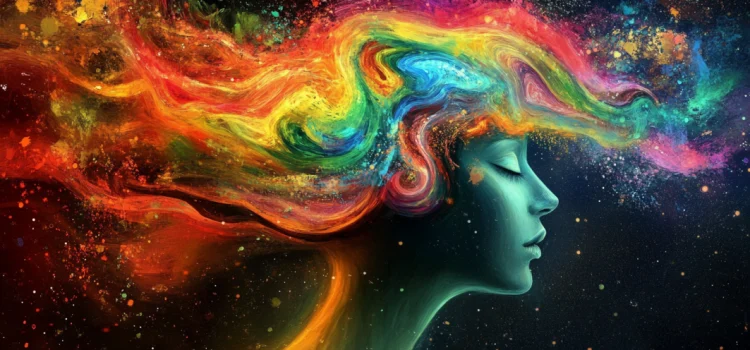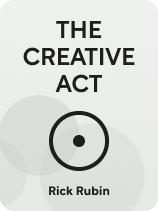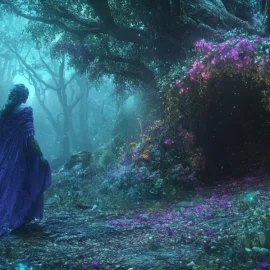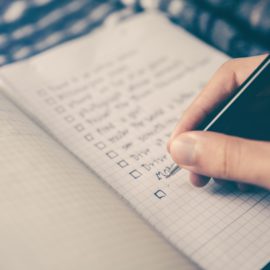

This article is an excerpt from the Shortform book guide to "The Creative Act" by Rick Rubin. Shortform has the world's best summaries and analyses of books you should be reading.
Like this article? Sign up for a free trial here.
What exactly is creativity? Where does creativity come from? Are there people who are unable to access it?
In his book The Creative Act, Rick Rubin asserts that anyone can access creativity. He posits that creativity isn’t something one simply does, but rather an expression of self.
Keep reading for an explanation of what creativity is and how you can harness it.
What Is Creativity?
According to music producer Rubin, creativity isn’t a gift granted to the few, but something that’s available to anyone. He argues that every person is an artist because, regardless of whether or not you’re “making art,” you practice creativity through your daily self-expression—the outfits you put together, the relationships you build, the way you feel or move when you listen to a song, the observations you make as you walk down the street. Your experience of the world is unique to your perspective. You’re creative just by being.
| Is Creativity Innate? While Rubin’s view emphasizes the universality of creativity, research suggests a more nuanced picture. Creativity appears to emerge from a complex interplay between genetics and environment. Studies indicate that genes play a significant role in creativity, with certain brain structures and gene clusters linked to increased creative abilities. However, life experiences can greatly affect gene expression—or the process that turns the information in a gene into a function—related to creativity. For example, trauma can alter gene expression, potentially enhancing creativity by increasing emotional sensitivity and divergent thinking. In severe cases, however, trauma may impair creativity through cognitive disruptions. Additionally, if your upbringing encouraged exploration and provided diverse experiences, you’re more likely to nurture creative thinking skills. Therefore, while everyone may have creative potential, as Rubin argues, the degree and expression of creativity can vary considerably based on both innate and external factors. |
Where Does Creativity Come From?
Rubin posits that creativity isn’t something one simply does, but rather an expression of self. He explains that every person has a connection with a source beyond their everyday selves. This source, as Rubin describes it, is a universal wellspring of creativity and inspiration. It’s not an external entity, but rather an innate part of human consciousness that transcends any individual. He argues this source is accessible through introspection, mindfulness, and the cultivation of an open, receptive state of mind.
| A Different View on the Source of Creativity While Rubin sees the source of creativity as an innate part of human consciousness, Big Magic author Elizabeth Gilbert portrays creativity as a mystical, almost supernatural force. She describes it as a form of “magic” that permeates the world around us, waiting to be tapped into by receptive individuals. In Gilbert’s view, ideas aren’t merely products of human thought, but rather living entities with their own agency. She personifies them as disembodied, energetic life-forms that actively seek out human partners. These idea-entities have a desire to be made manifest in the world and will look for the right person to bring them into reality. In this paradigm, the artist’s role isn’t just to generate ideas, but to be open and receptive to the ideas that are seeking them out. |
Rubin advocates for seeing yourself as a conduit for creativity rather than its source. He argues that this perspective helps overcome common creative barriers like fear of judgment or failure by reducing personal attachment to the work and easing the pressure to produce “brilliant” ideas. Viewing creativity as flowing through you promotes openness to inspiration and lessens self-criticism. By remaining receptive and allowing ideas to arise naturally, you can more easily enter a productive flow state, free from self-imposed anxieties that often hinder creation.
(Shortform note: Mindfulness can be a helpful tool in reframing your relationship to creativity, quieting your fear of failure, and reducing personal attachment. A regular mindfulness practice fosters nonjudgmental awareness, allowing new ideas to emerge and helping you enter a flow state free from self-doubt and fear of failure. If you’re new to mindfulness, try a simple breathing exercise: Set aside five minutes daily to sit quietly and focus on your breath. Notice the sensation of each inhale and exhale without trying to change anything. When your mind wanders, gently bring your attention back to your breath. This practice can help cultivate present-moment awareness and lay the foundation for more advanced mindfulness techniques.)
Rubin also introduces the idea of a filter—each person’s unique set of experiences, perspectives, tastes, and skills that they use to interpret and shape incoming ideas. The filter is how artists leave their mark on their work.
By opening yourself as a vessel to receive creative energy from the source, you can then express your unique self through your personal filter, resulting in authentic and original work. Rubin suggests that finding harmony between being open to universal inspiration and applying your unique perspective is essential for living a meaningful, creative life. He suggests that you cultivate both aspects: opening yourself up fully to receive inspiration and ideas from the source, while also developing your unique perspective and skills to shape those ideas into original works.
(Shortform note: This concept of an individual filter aligns with Austin Kleon’s ideas in Steal Like an Artist. Kleon argues that all creative work is inherently influenced by existing ideas. However, like Rubin, Kleon argues that innovation comes from interpreting these influences through your unique viewpoint. Kleon encourages artists to embrace this process as a form of collaboration with the past, rather than viewing it as mere imitation. By absorbing a multitude of styles, ideas, and expressions, creators can remix these elements through their own experiential filter, resulting in something new and authentic.)

———End of Preview———
Like what you just read? Read the rest of the world's best book summary and analysis of Rick Rubin's "The Creative Act" at Shortform.
Here's what you'll find in our full The Creative Act summary:
- Where creativity comes from and why it matters
- How to take inspiration from anywhere and everywhere
- A music producer’s advice for enhancing your creativity






